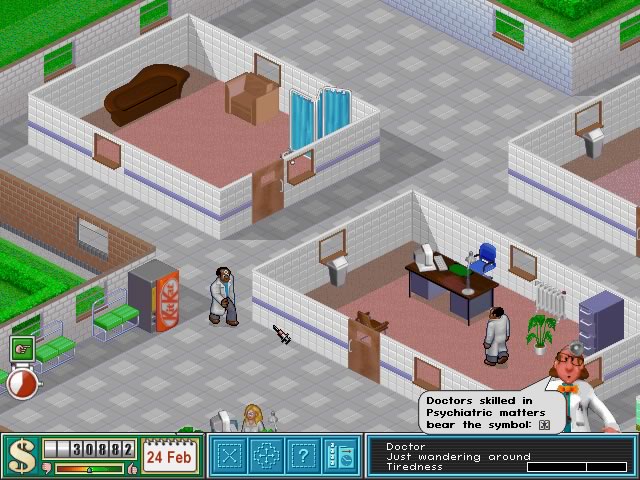

The race to specialization and the race to realism occurred simultaneously, and both left mainstream gamers at a loss.

Only the most dedicated players are willing to spend hours learning the controls before they can get a plane off the runway or build a city that has a functional-if not efficient-transport system. At some point, though, this alienated casual fans of the genre. There was a big push to make sim games more real, more lifelike, more complex. The primary differentiator between games in the genre was always in the levels of detail and realism. This is one of the greatest challenges in making a sim popular today. Other hospital-themed games include Hospital Tycoon (2007) and Theme Hospital (1997), both of which involve managing a hospital and its staff. A sequel, Life & Death 2: The Brain, featured improved graphics and slightly deeper (but otherwise identical) gameplay-except this time you were a neurosurgeon.

Irresponsible decisions or bad judgement could mean life or death for your patients, and each mistake saw you sent to a classroom for a lecture on what you did wrong. Far more realistic than Trauma Center (but still clearly a game), Life & Death put you in the shoes of an abdominal surgeon who needed to diagnose and treat patients of the Toolworks General hospital. Trauma Center offered a linear (and ridiculous) story that followed Doctor Derek Stiles on a journey to save the world with his new found "Healing Touch." Core to the game's appeal was its pseudo-realistic surgical operations, which likely took influence from 1988 sim Life & Death. Medical sims shot to popularity in 2005, with the release of Trauma Center: Under the Knife for the Nintendo DS. What? You wouldn't buy a swimming-themed audio novel called Drowning Water? Let's play doctor
#Lgr theme hospital free#
It took considerable planning to get the right balance and flow of rides, paths, free entertainment, food, drink, carnival games, rest areas, and open spaces. Visitors had varying preferences for ride types and excitement levels you needed to cater for the queasy types who might vomit after a merry-go-round, as well as the thrill seekers who wanted to have a near-death experience on an outrageously dangerous roller coaster. If you wanted to actually build a functional and safe amusement park, though, RollerCoaster Tycoon offered incredible depth. Many players made their fun by building roller coasters of death, with exits placed underground, over water, into a cliff face, or in some other location where a crash is likely to occur (visitors were too stupid to know that they shouldn't get on such a dangerous ride). Theme Park also helped pave the way for Transport Tycoon creator Chris Sawyer to design RollerCoaster Tycoon (1999), a deeply complex theme park management game with a focus on building custom roller coasters (which could be shared and traded with other players). If Theme Park has taught me anything, it's that jumping castles break down very easily.


 0 kommentar(er)
0 kommentar(er)
